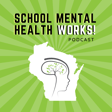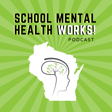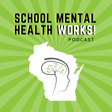
Episode 16: Building a Strong Foundation with the Compassion Resilience Toolkit
Hello Fall! We are excited to start a new school year by talking about Compassion Resilience and how to create a positive, supportive school culture for staff and students. Lisa Stein from the Wisconsin Department of Public Instruction is joined by Emily Jonesberg from Rogers Behavioral Health and Katharine Reid from Wisconsin Safe and Healthy Schools.
Click here for more information about the Compassion Resilience Training of Facilitators that begins on September 30, 2024 (register by September 23, 2024).
Show Notes
Coalition for Expanding School-Based Mental Health in Wisconsin
Wisconsin Department of Public Instruction - Comprehensive School Mental Health
Wisconsin School Mental Health Framework
Wisconsin Department of Public Instruction - Adult SEL
Wisconsin Department of Public Instruction - Educator Wellness
WISE Stigma Reduction Resources
Wisconsin Safe and Healthy Schools
Guest Information
Lisa Stein - Education Consultant, School Mental Health
Student Services/Prevention and Wellness Team
Wisconsin Department of Public Instruction
Note: Lisa Stein retired from WI DPI after this episode was recorded.
Emily Jonesberg, MSW, LCSW
Program Manager
Rogers Community Learning and Engagement & WISE
Note: In the intro to this episode, Rogers Community Learning and Engagement was referred to by its former name: InHealth.
emily.jonesberg@rogersbh.org
Katharine Reid, MS NBCT
Wisconsin Safe and Healthy Schools


